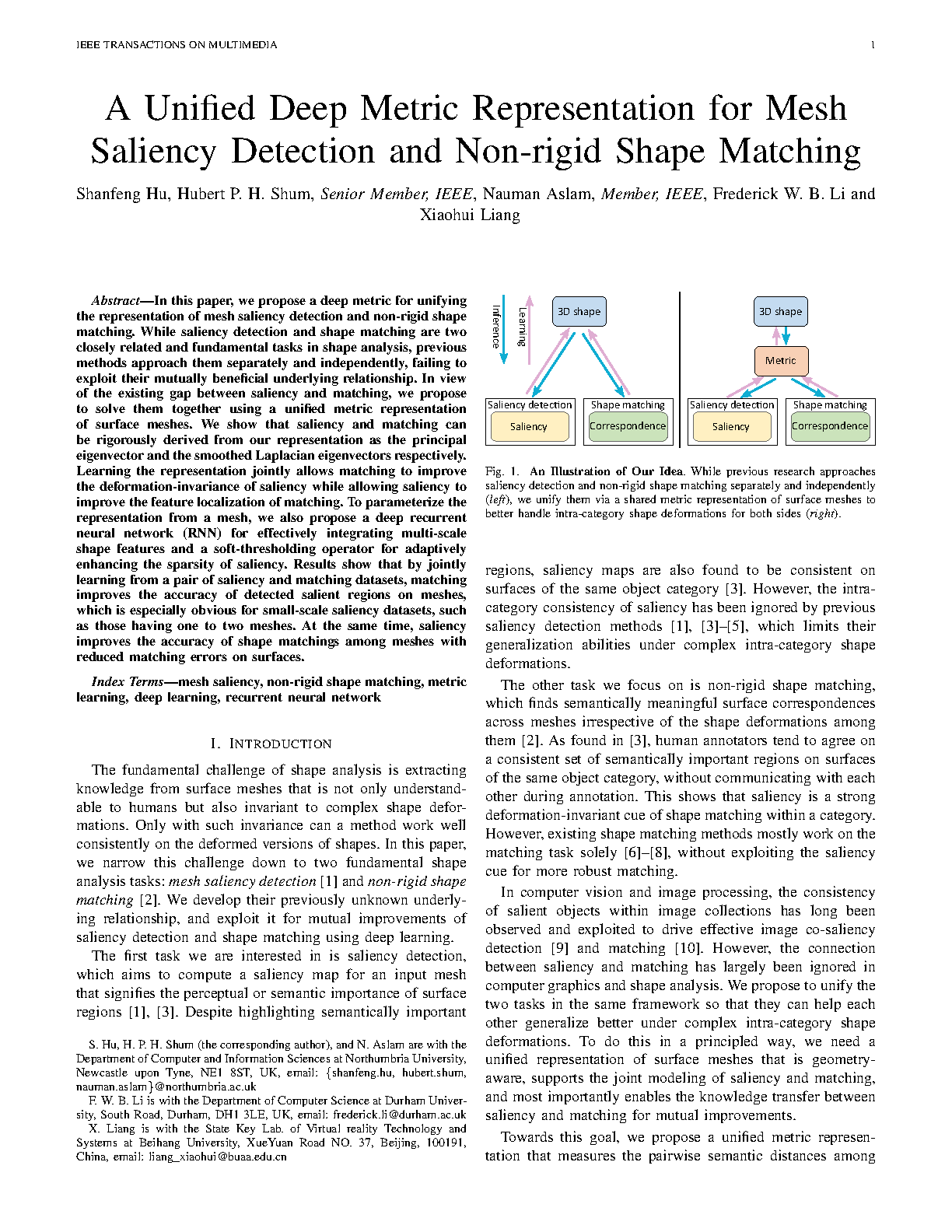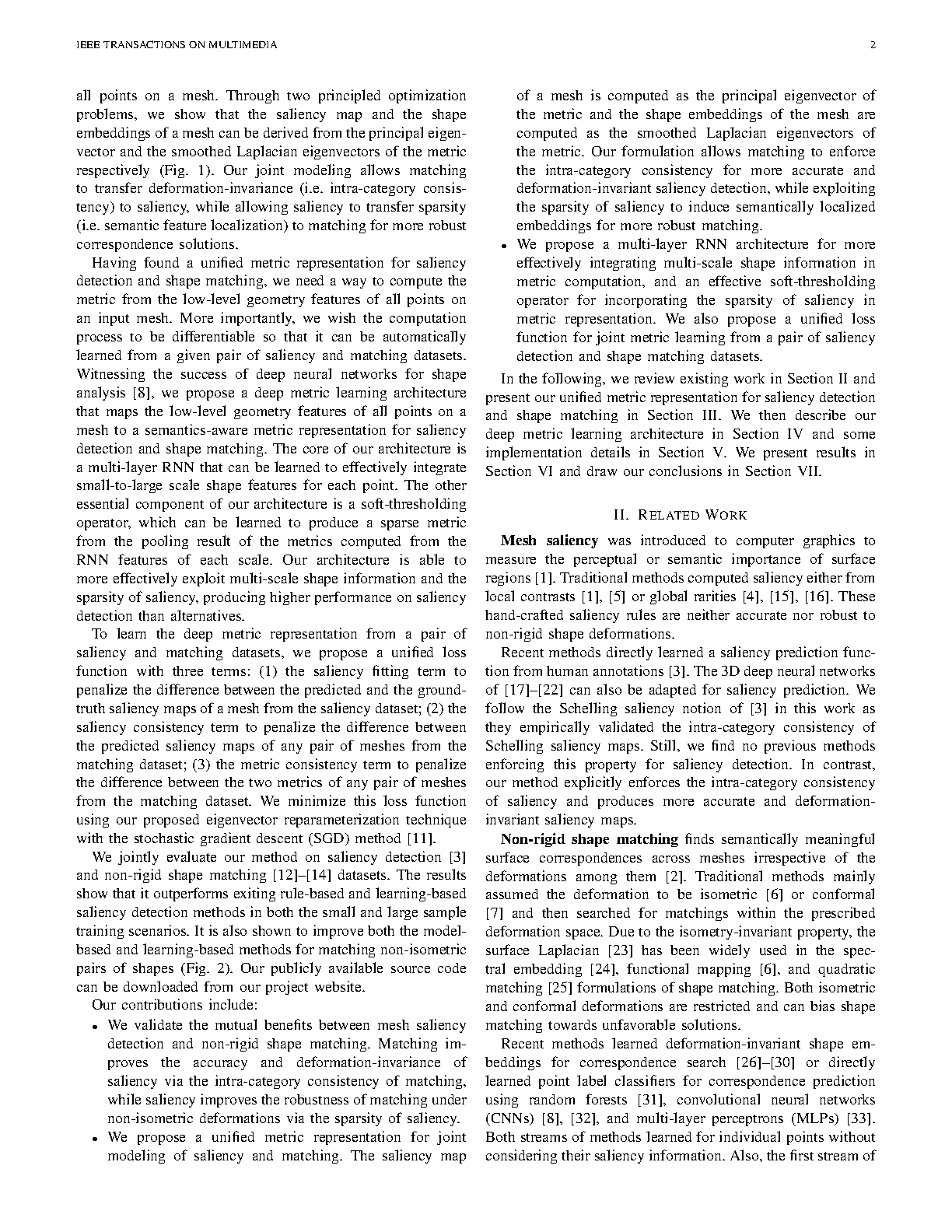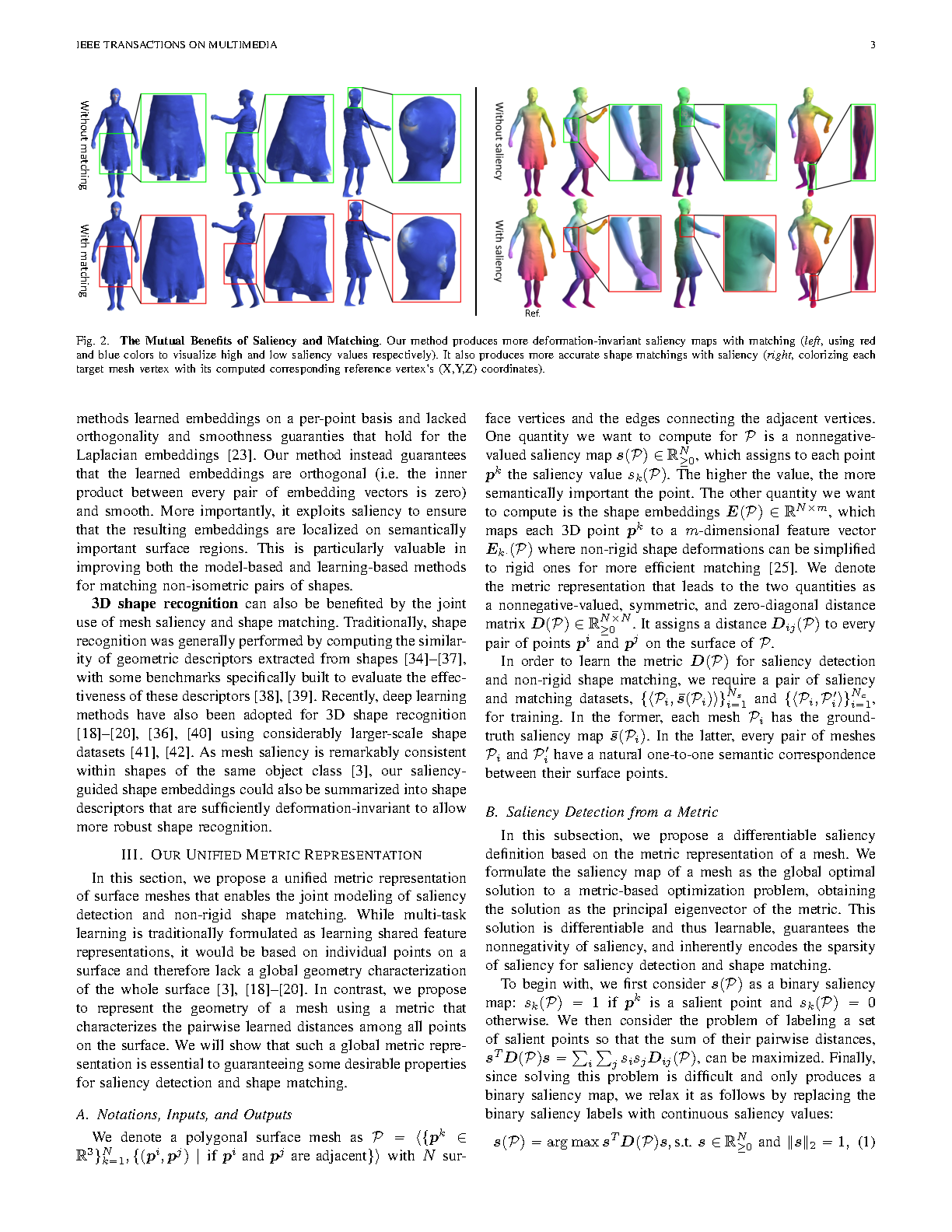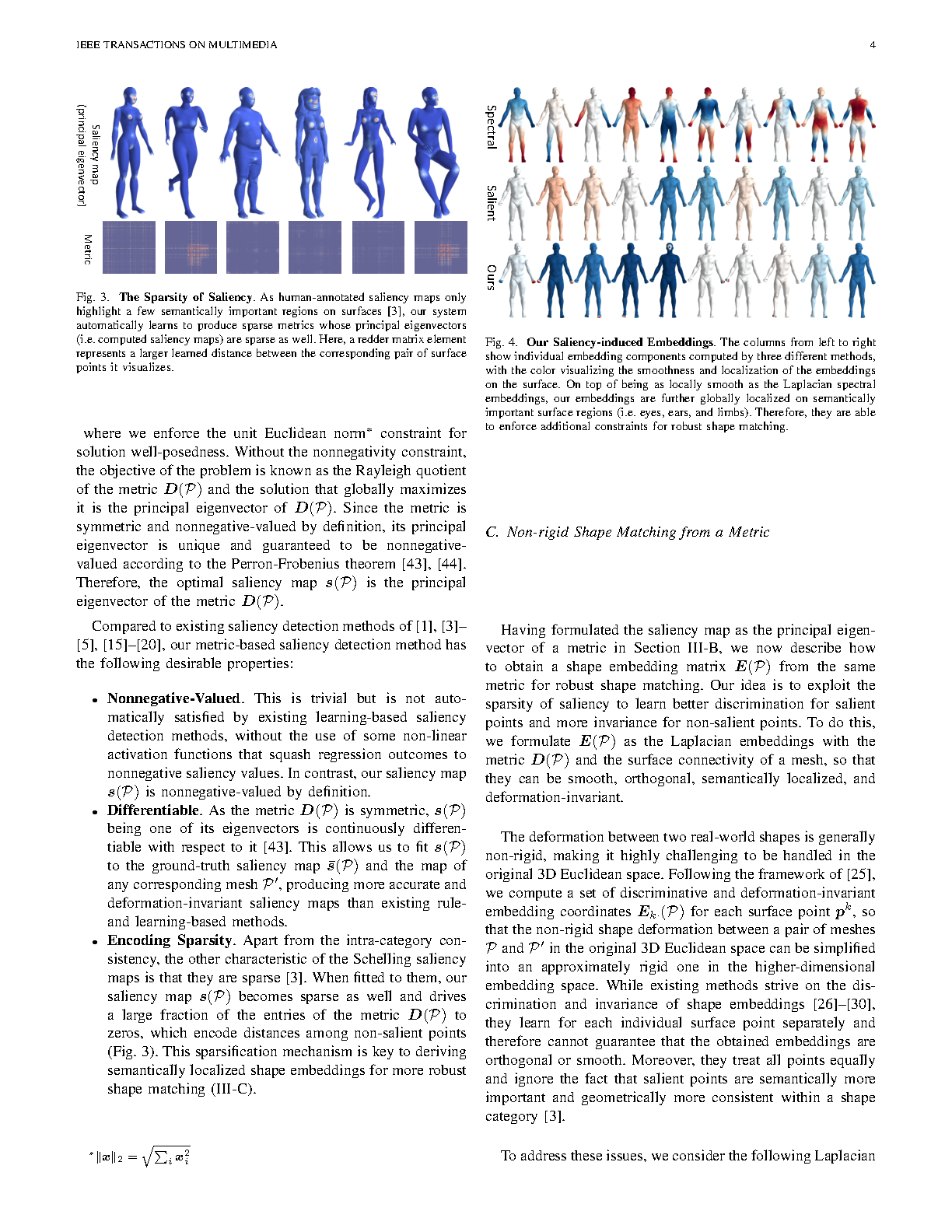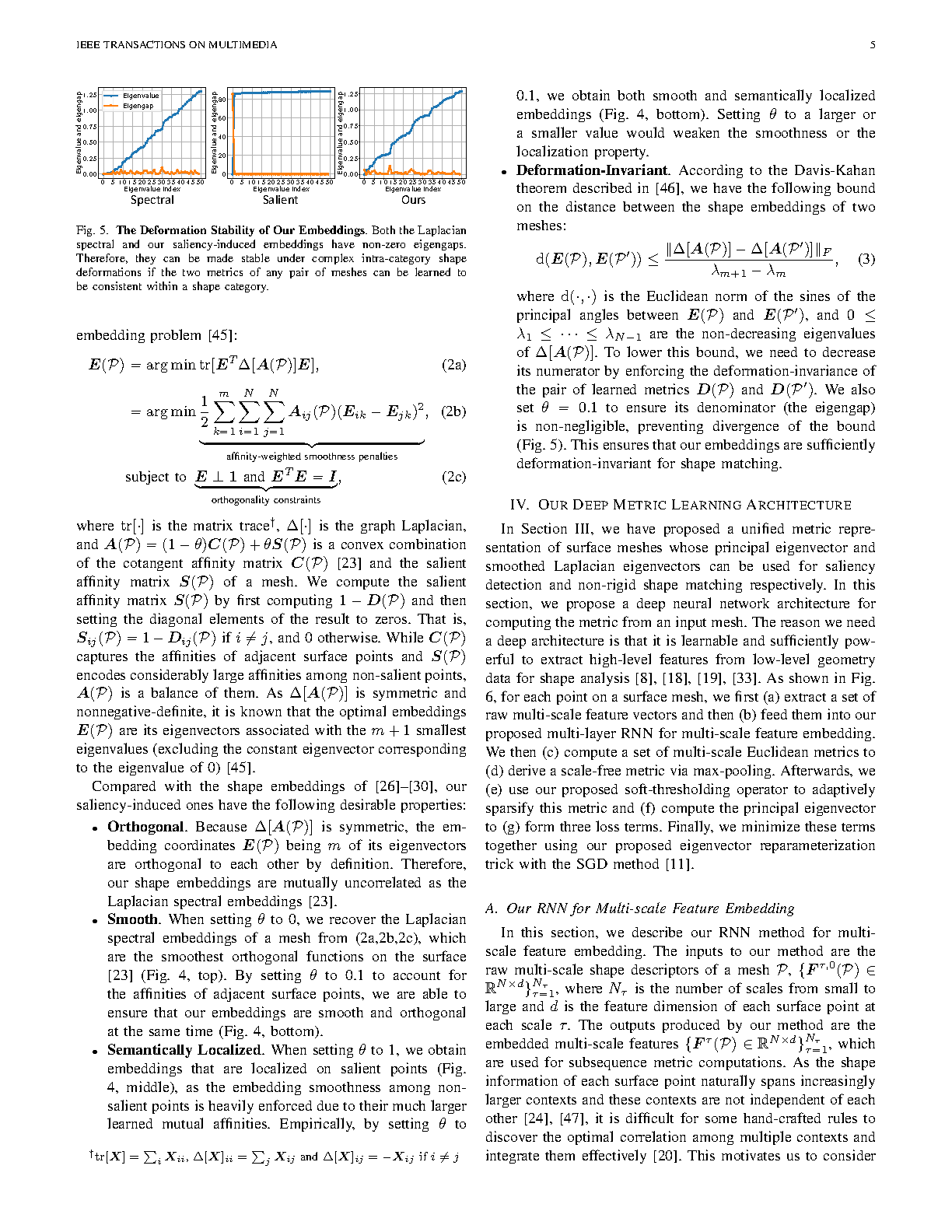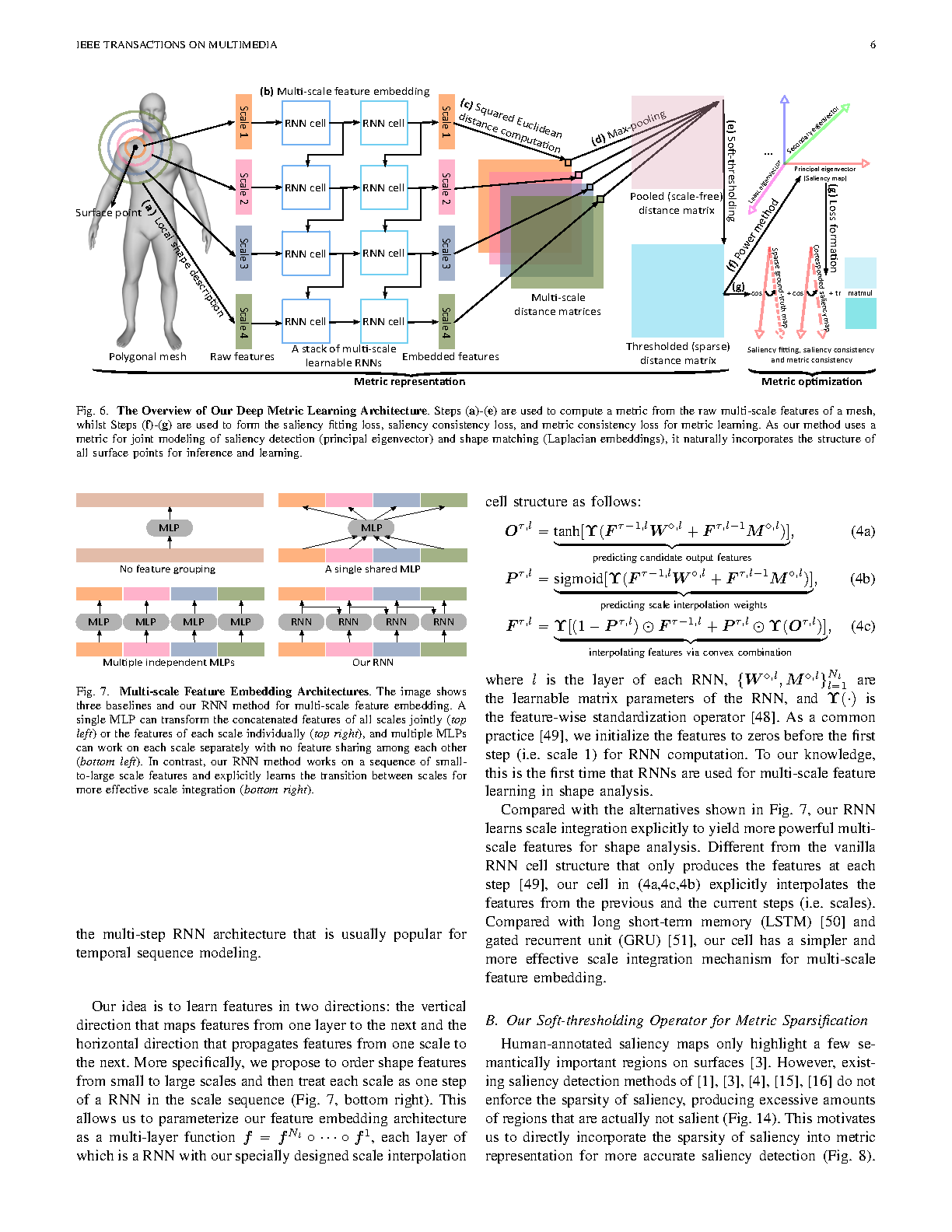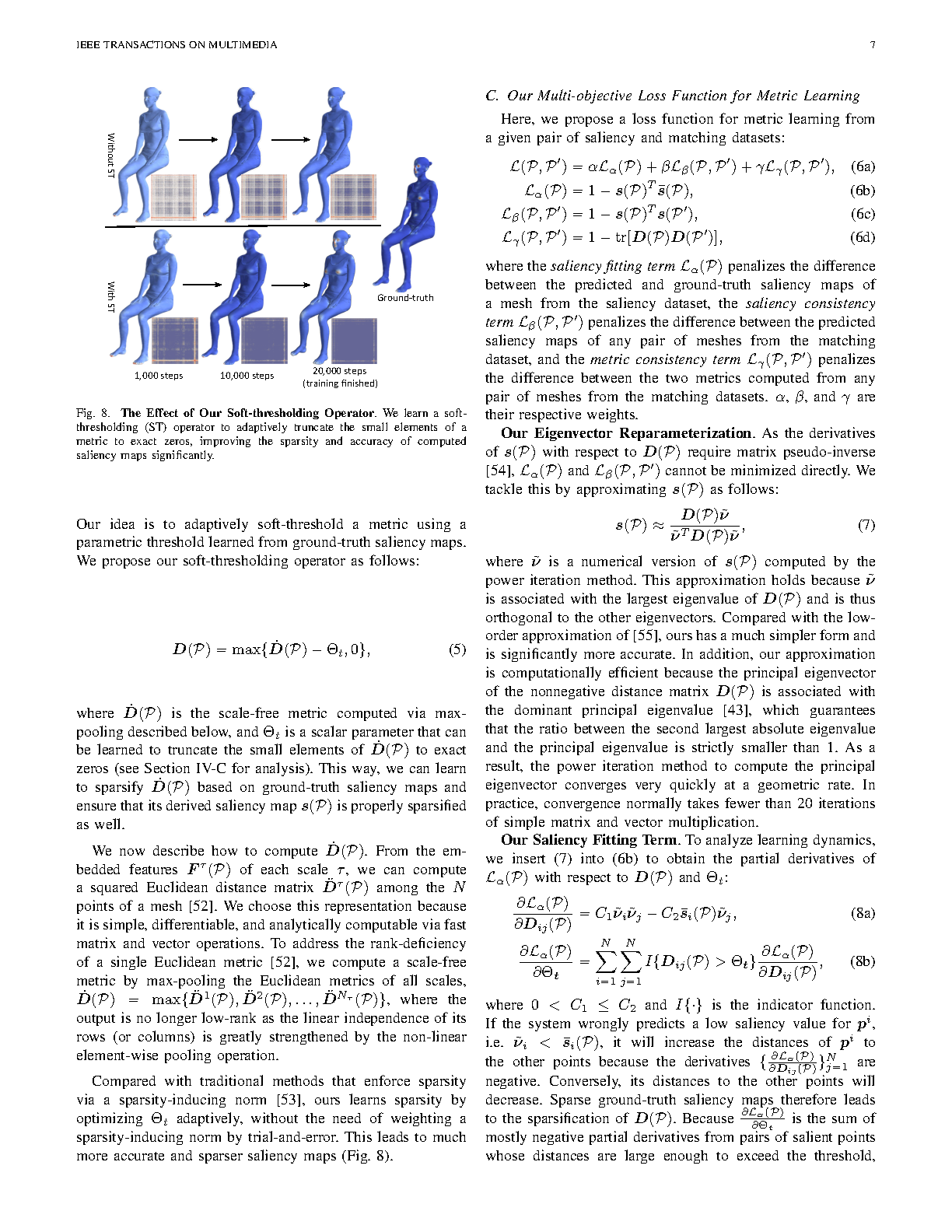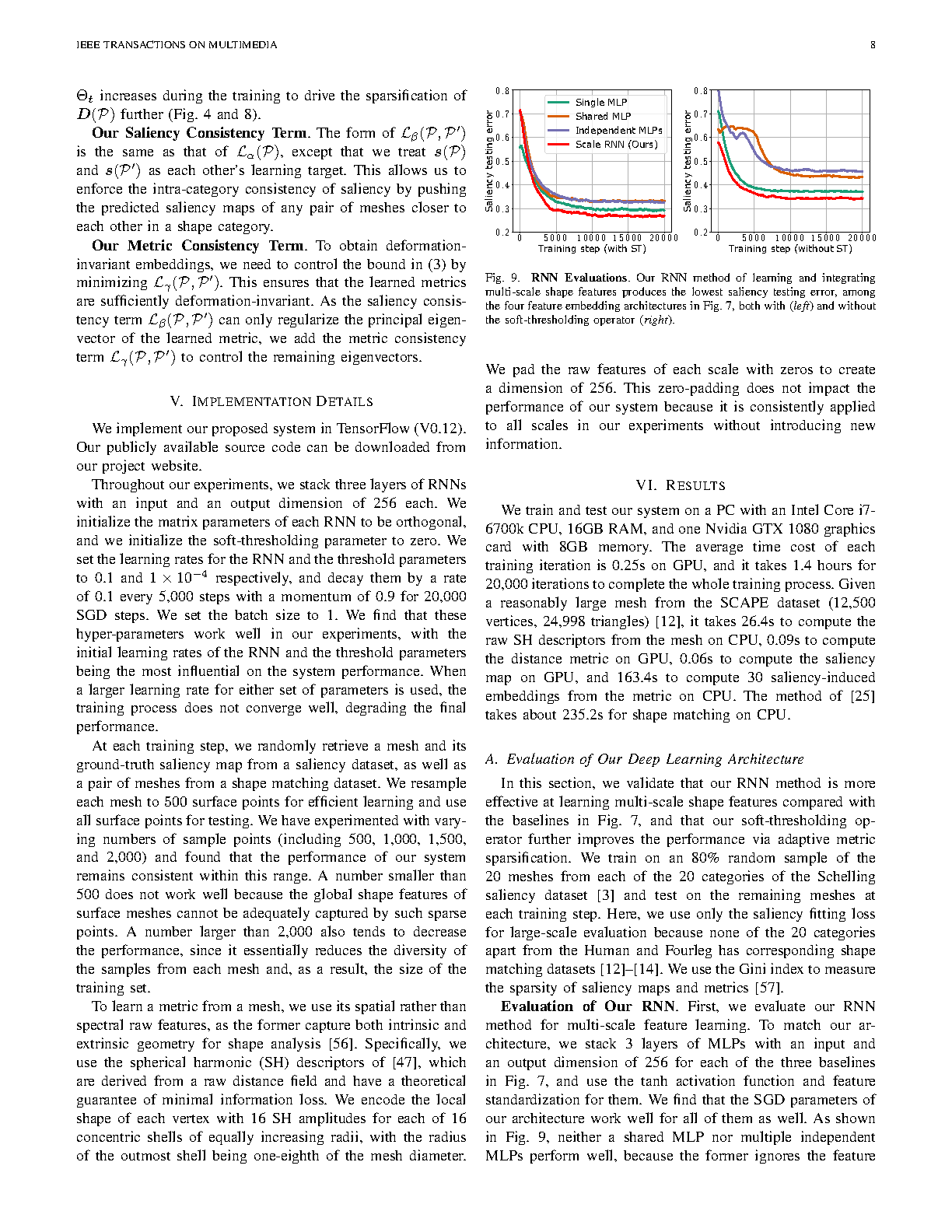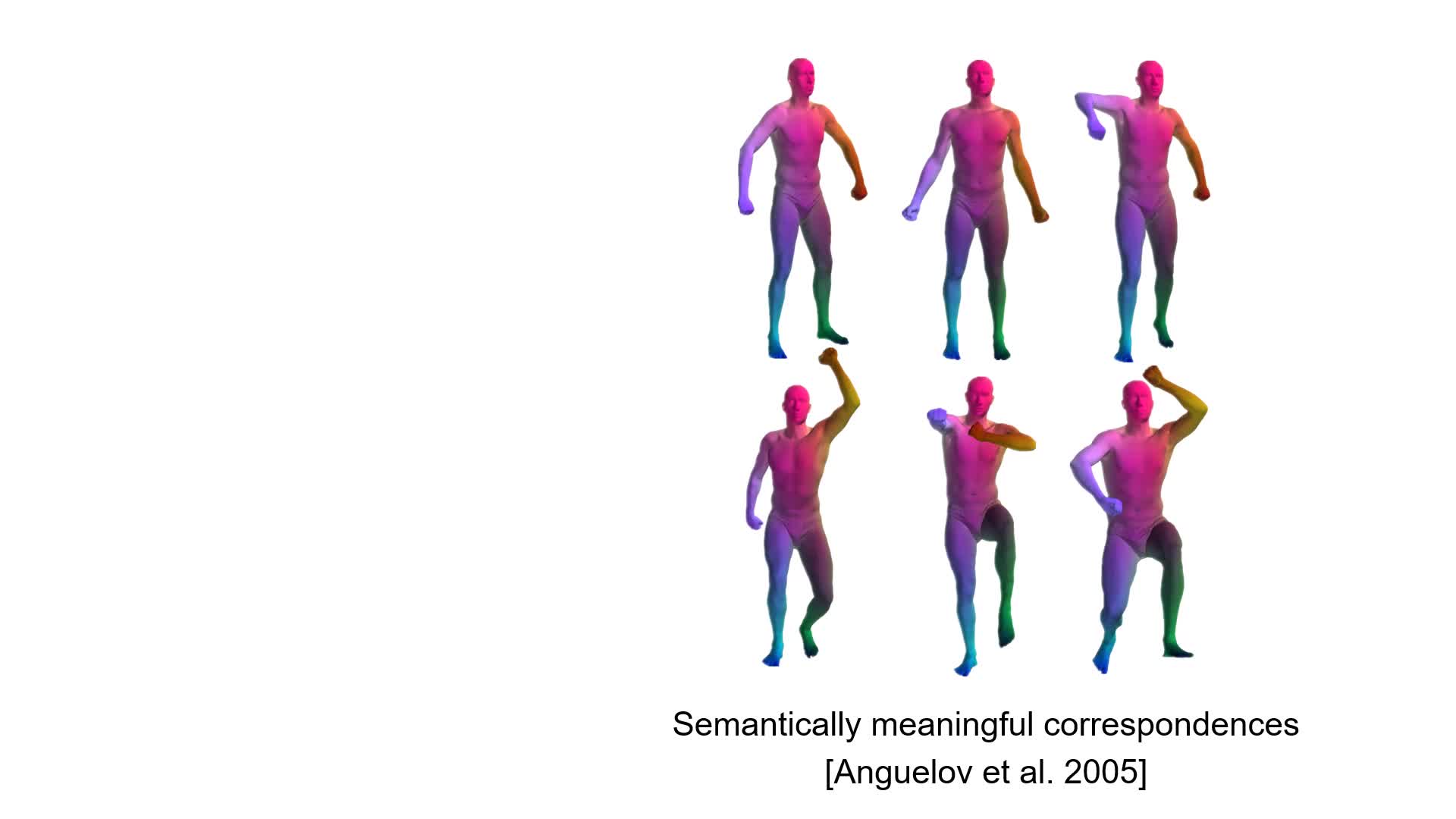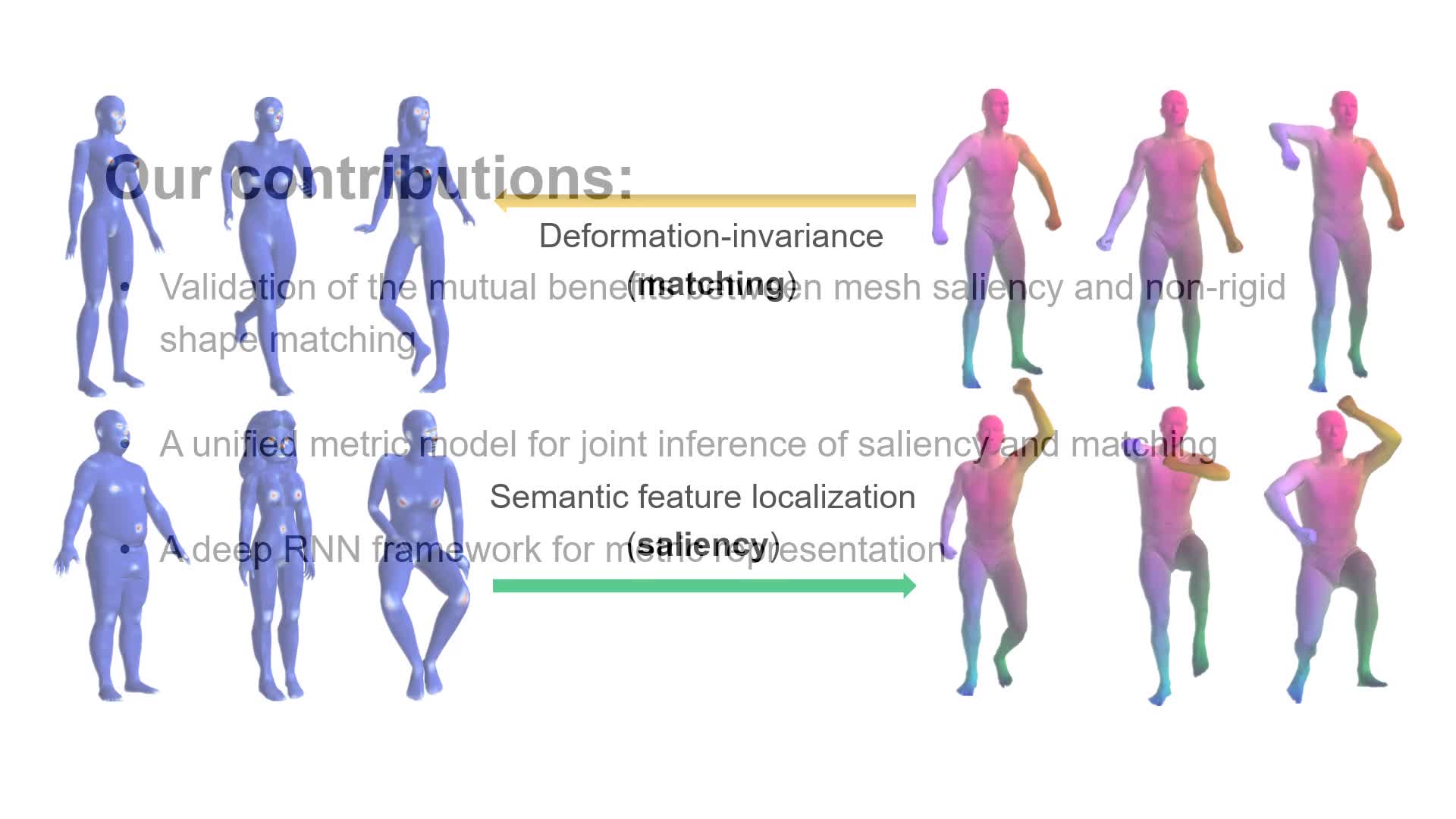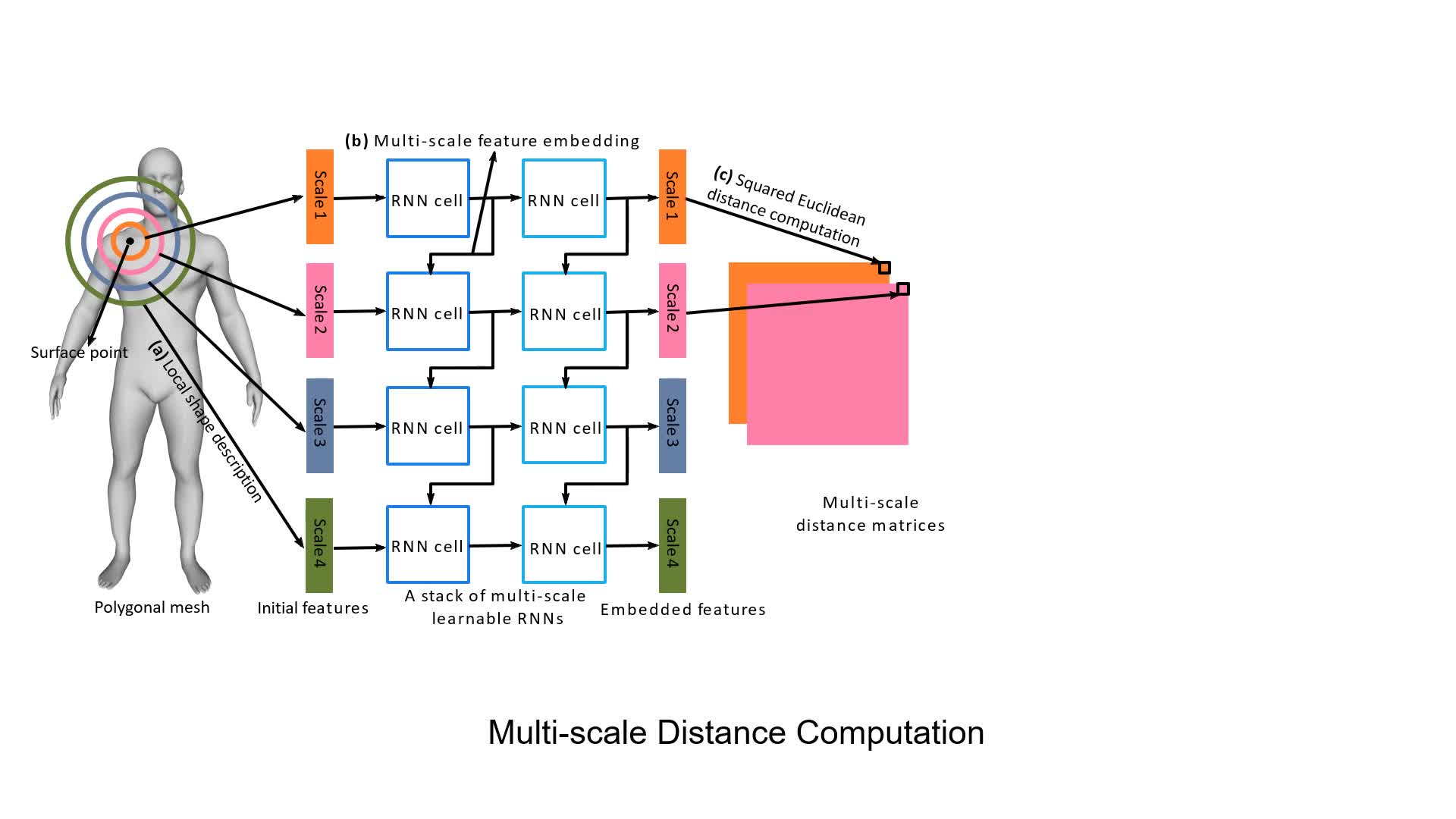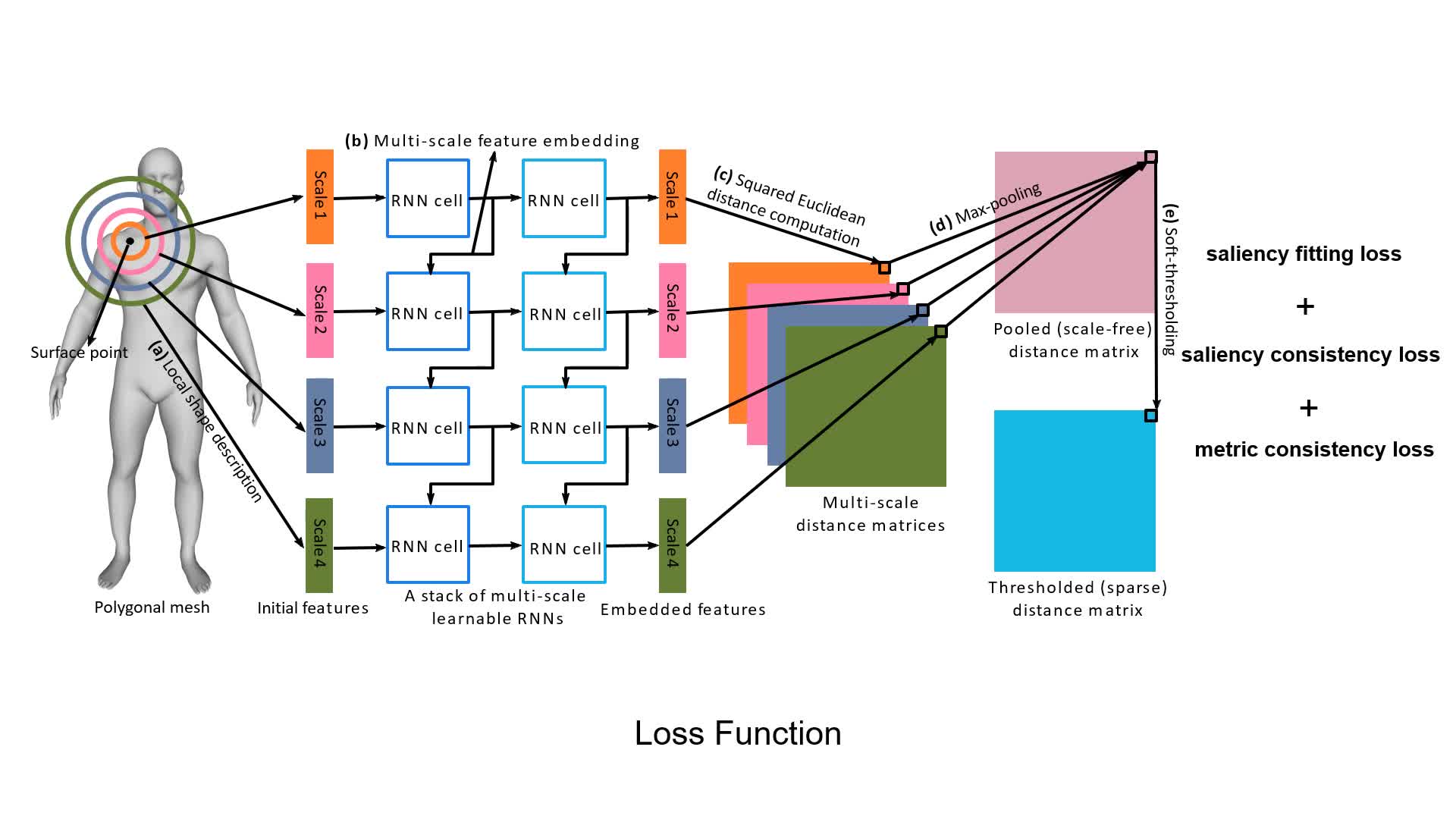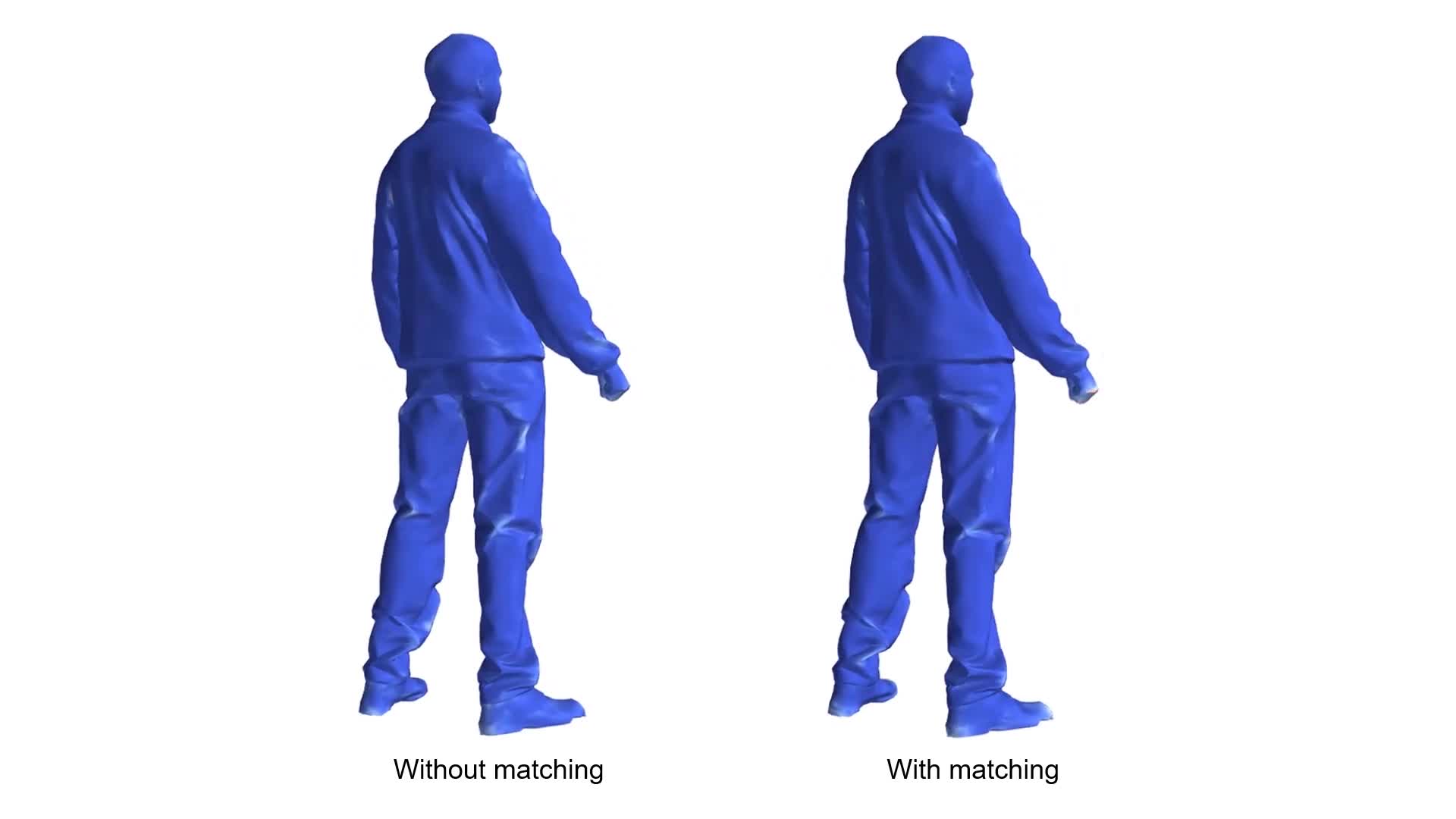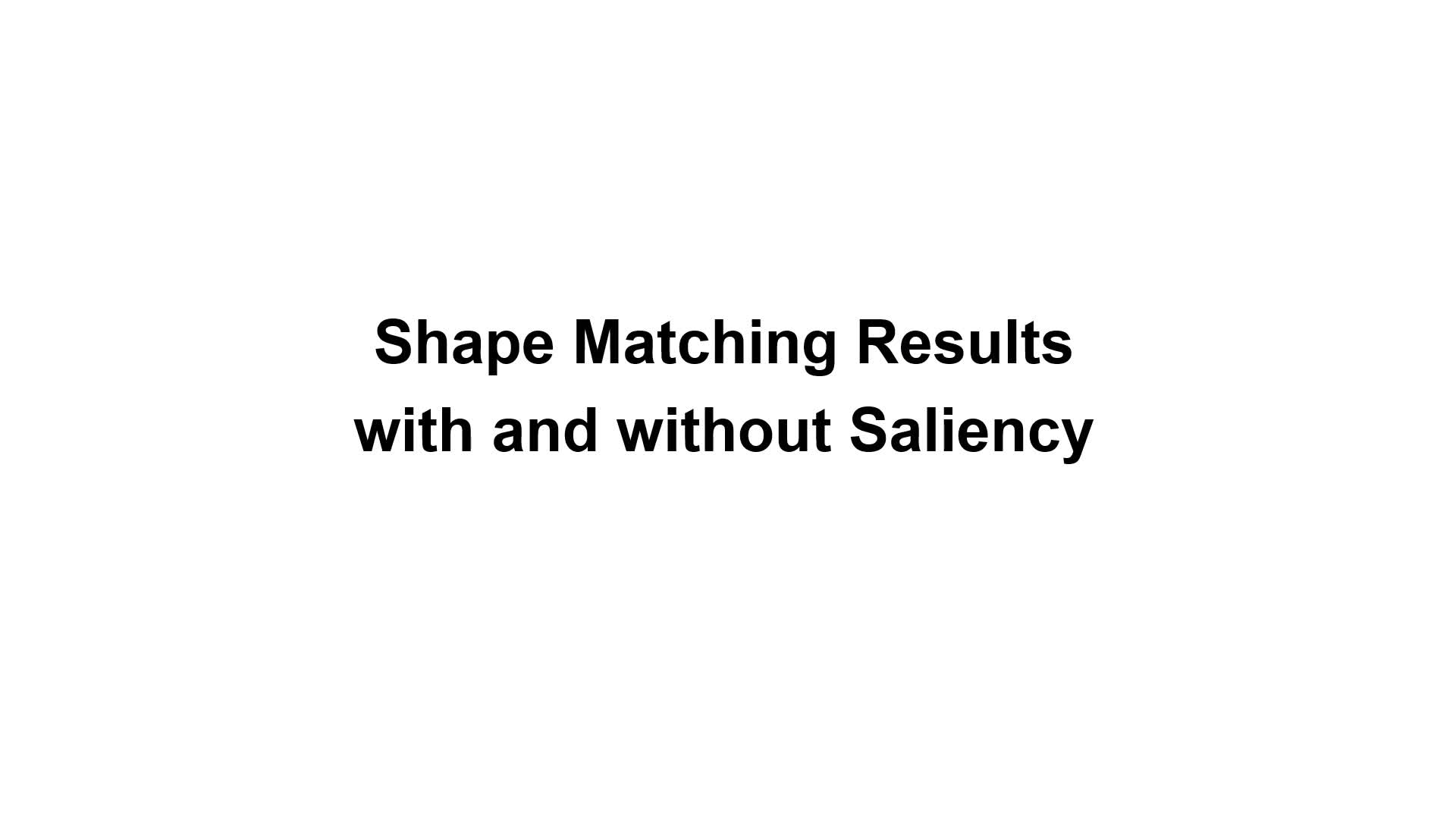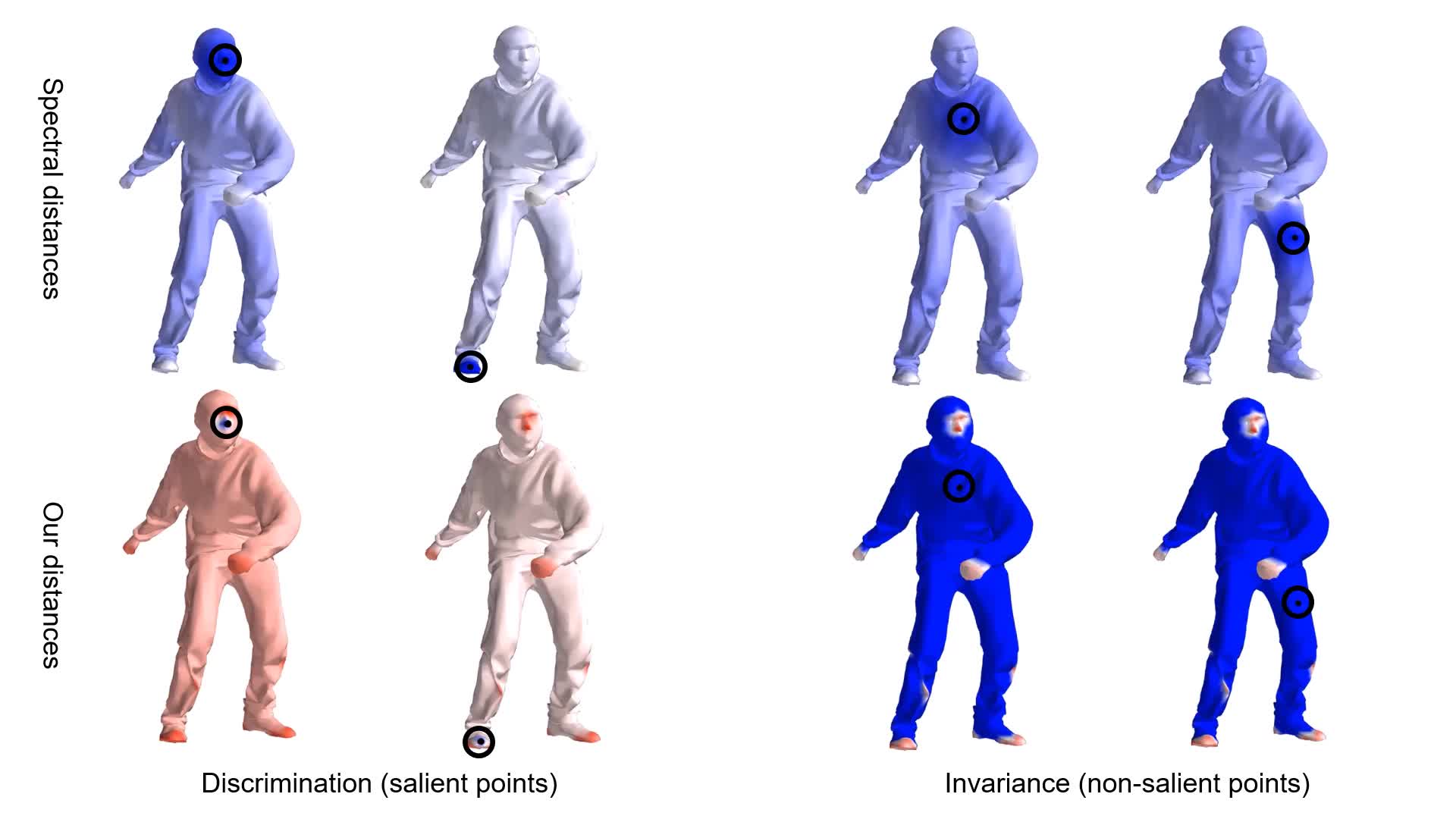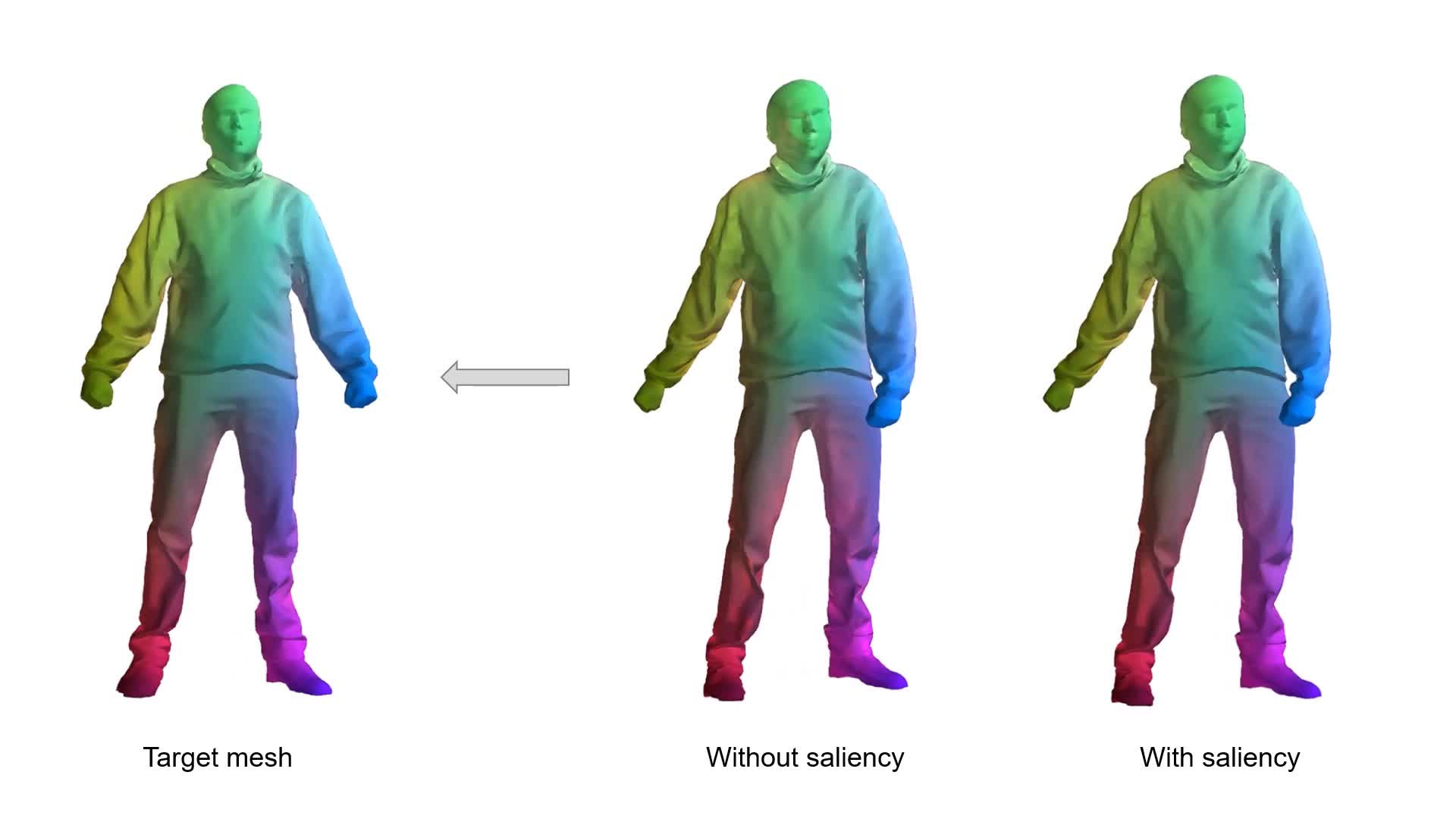A Unified Deep Metric Representation for Mesh Saliency Detection and Non-rigid Shape Matching

Abstract
In this paper, we propose a deep metric for unifying the representation of mesh saliency detection and non-rigid shape matching. While saliency detection and shape matching are two closely related and fundamental tasks in shape analysis, previous methods approach them separately and independently, failing to exploit their mutually beneficial underlying relationship. In view of the existing gap between saliency and matching, we propose to solve them together using a unified metric representation of surface meshes. We show that saliency and matching can be rigorously derived from our representation as the principal eigenvector and the smoothed Laplacian eigenvectors respectively. Learning the representation jointly allows matching to improve the deformation-invariance of saliency while allowing saliency to improve the feature localization of matching. To parameterize the representation from a mesh, we also propose a deep recurrent neural network (RNN) for effectively integrating multi-scale shape features and a soft-thresholding operator for adaptively enhancing the sparsity of saliency. Results show that by jointly learning from a pair of saliency and matching datasets, matching improves the accuracy of detected salient regions on meshes, which is especially obvious for small-scale saliency datasets, such as those having one to two meshes. At the same time, saliency improves the accuracy of shape matchings among meshes with reduced matching errors on surfaces.
Publication
Shanfeng Hu, Hubert P. H. Shum, Nauman Aslam, Frederick W. B. Li and Xiaohui Liang,
"A Unified Deep Metric Representation for Mesh Saliency Detection and Non-rigid Shape Matching",
IEEE Transactions on Multimedia (TMM), 2020
Links and Downloads
YouTube
References
Last updated on 21 April 2022, RSS Feeds
